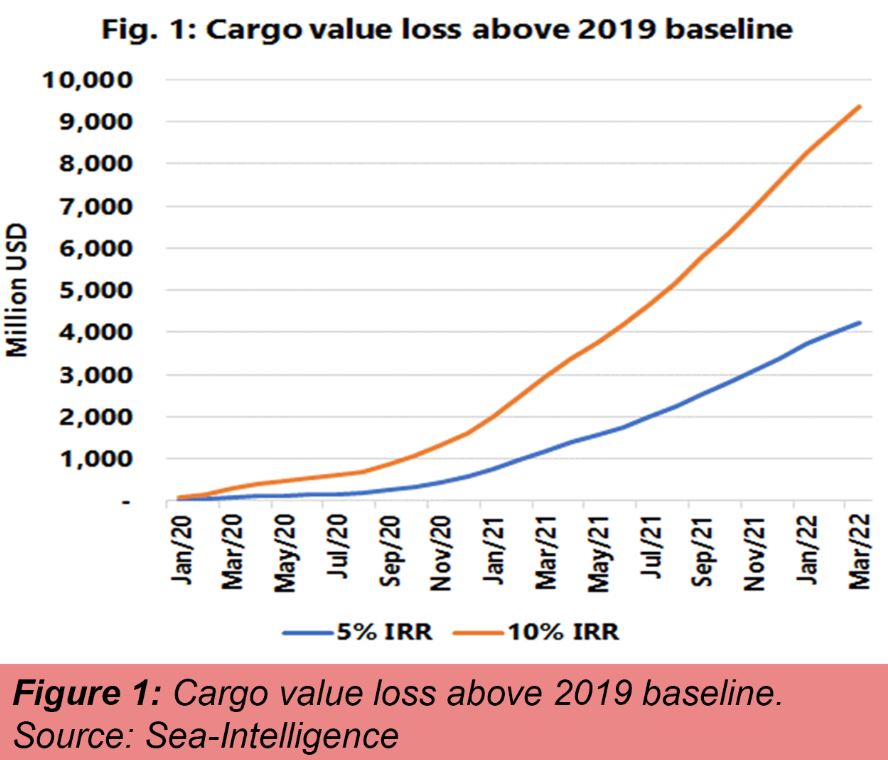
A study by Sea-Intelligence Maritime Analysis estimates shippers have lost up to US$10 million stemming from cargo delays over the past two years. Measuring schedule reliability from the perspective of cargo being moved, data by Sea-Intelligence shows that pre-pandemic, the baseline level of cargo arriving late was at 20% but had increased to 70% in the past few months.
Sea-intelligence calculated the number of TEU*Days lost due to late arrivals and found that the pre-pandemic baseline was an average of 8 million TEU*Days lost to delays each month. In January 2022, this increased to almost 70 million TEU*Days, before dropping in March 2022 to 57 million TEU*Days.
“To place this measure into context, it can be argued that the loss of 31 TEU*days in January is the same as having an “inventory” of 1 TEU of cargo just standing idle for the full month,” said Alan Murphy, CEO of Sea-Intelligence. He explained that using this definition of “inventory”, the pre-pandemic normal is a permanent inventory of 260,000 TEU globally, due to cargo delays. Current supply chain delays have brought up numbers to a present level of 1.8 million TEU of inventory.
Lost TEU days depends on the value of the cargo in the container as well as an internal rate of return (IRR) or the interest rate that a company assigns to their inventory value. Sea-Intelligence used a benchmark cargo value of US$40,000 per TEU and applied interest rates of five percent and ten percent. The cumulative loss was calculated across January 2020 to March 2022, over the 2019 baseline level to assess the total impact (see Figure).
“What this tells us, is that the severe vessel delays alone have resulted in a financial loss for the shippers globally, of roughly US$5-10 billion thus far. This is only the ocean side and does not include any inland delays or port congestion,” Murphy pointed out.
Source: Container News